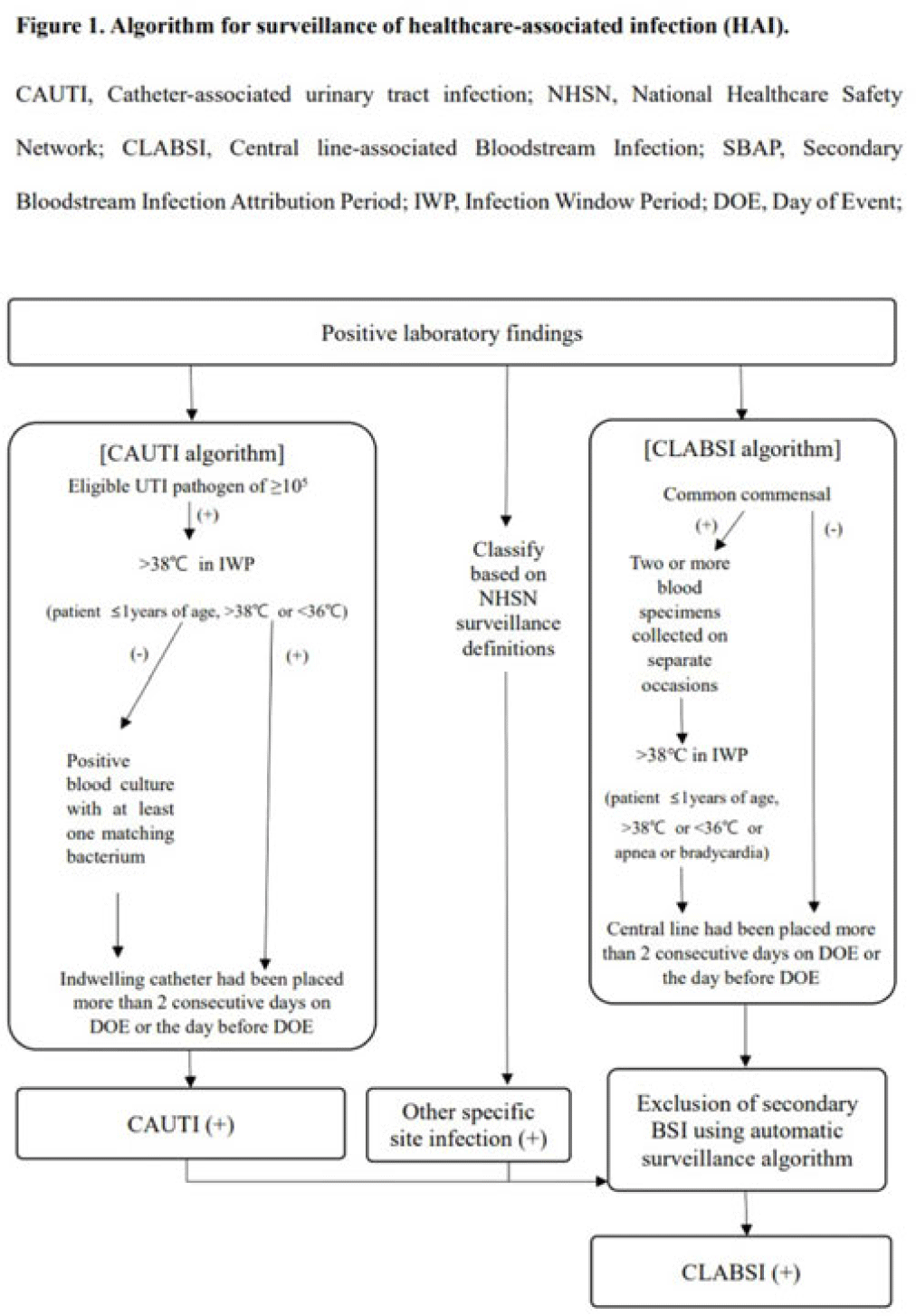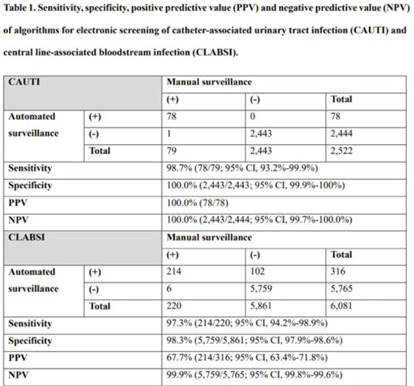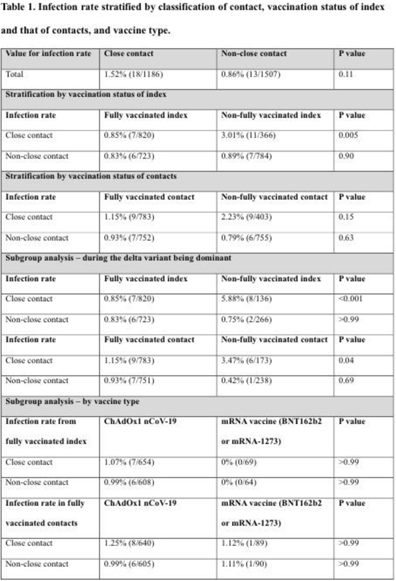68 results
Validation of automated surveillance of healthcare-associated infections using electronic screening algorithms
-
- Journal:
- Antimicrobial Stewardship & Healthcare Epidemiology / Volume 3 / Issue S2 / June 2023
- Published online by Cambridge University Press:
- 29 September 2023, p. s103
-
- Article
-
- You have access
- Open access
- Export citation
Effect of COVID-19 vaccination on transmission among healthcare workers in South Korea
-
- Journal:
- Antimicrobial Stewardship & Healthcare Epidemiology / Volume 2 / Issue S1 / July 2022
- Published online by Cambridge University Press:
- 16 May 2022, pp. s75-s76
-
- Article
-
- You have access
- Open access
- Export citation
Impact of data extraction errors in meta-analyses on the association between depression and peripheral inflammatory biomarkers: an umbrella review
-
- Journal:
- Psychological Medicine / Volume 53 / Issue 5 / April 2023
- Published online by Cambridge University Press:
- 09 November 2021, pp. 2017-2030
-
- Article
- Export citation
Fit-failure rate associated with simulated reuse and extended use of N95 respirators assessed by a quantitative fit test
- Part of
-
- Journal:
- Infection Control & Hospital Epidemiology / Volume 42 / Issue 11 / November 2021
- Published online by Cambridge University Press:
- 25 January 2021, pp. 1313-1317
- Print publication:
- November 2021
-
- Article
-
- You have access
- Open access
- HTML
- Export citation
Seroprevalence of Mumps in Healthcare Workers in South Korea
-
- Journal:
- Infection Control & Hospital Epidemiology / Volume 41 / Issue S1 / October 2020
- Published online by Cambridge University Press:
- 02 November 2020, pp. s387-s388
- Print publication:
- October 2020
-
- Article
-
- You have access
- Export citation
Seroprevalence of Measles in Healthcare Workers in South Korea
-
- Journal:
- Infection Control & Hospital Epidemiology / Volume 41 / Issue S1 / October 2020
- Published online by Cambridge University Press:
- 02 November 2020, pp. s386-s387
- Print publication:
- October 2020
-
- Article
-
- You have access
- Export citation
Effects of the Saemangeum Reclamation Project on migratory shorebird staging in the Saemangeum and Geum Estuaries, South Korea
-
- Journal:
- Bird Conservation International / Volume 28 / Issue 2 / June 2018
- Published online by Cambridge University Press:
- 13 February 2017, pp. 238-250
-
- Article
-
- You have access
- HTML
- Export citation
Concealed resuscitation-related injuries as reversible cause of recurrent arrest following extracorporeal cardiopulmonary resuscitation
-
- Journal:
- Canadian Journal of Emergency Medicine / Volume 19 / Issue 5 / September 2017
- Published online by Cambridge University Press:
- 07 November 2016, pp. 404-409
- Print publication:
- September 2017
-
- Article
-
- You have access
- HTML
- Export citation
Needle-Stick Injury Caused by a Patient With Severe Fever With Thrombocytopenia Syndrome in Korea
-
- Journal:
- Infection Control & Hospital Epidemiology / Volume 37 / Issue 3 / March 2016
- Published online by Cambridge University Press:
- 07 January 2016, pp. 368-369
- Print publication:
- March 2016
-
- Article
-
- You have access
- HTML
- Export citation
Mild to Moderate Early Exercise Promotes Recovery from Cerebral Ischemia in Rats
-
- Journal:
- Canadian Journal of Neurological Sciences / Volume 36 / Issue 4 / July 2009
- Published online by Cambridge University Press:
- 02 December 2014, pp. 443-449
-
- Article
-
- You have access
- Export citation
Serially Changing Metronidazole-Induced Encephalopathy
-
- Journal:
- Canadian Journal of Neurological Sciences / Volume 38 / Issue 6 / November 2011
- Published online by Cambridge University Press:
- 02 December 2014, pp. 921-924
-
- Article
-
- You have access
- Export citation
Isolated Inferior Rectus Paresis in a Patient with a History of Lymphoma
-
- Journal:
- Canadian Journal of Neurological Sciences / Volume 36 / Issue 4 / July 2009
- Published online by Cambridge University Press:
- 02 December 2014, pp. 515-517
-
- Article
-
- You have access
- Export citation
The G2019S LRRK2 Mutation is Rare in Korean Patients with Parkinson's Disease
-
- Journal:
- Canadian Journal of Neurological Sciences / Volume 34 / Issue 1 / February 2007
- Published online by Cambridge University Press:
- 02 December 2014, pp. 53-55
-
- Article
-
- You have access
- Export citation
Borna disease virus and deficit schizophrenia
-
- Journal:
- Acta Neuropsychiatrica / Volume 15 / Issue 5 / October 2003
- Published online by Cambridge University Press:
- 24 June 2014, pp. 262-265
-
- Article
- Export citation
Awareness of putative risk factors for Alzheimer’s disease among elderly Koreans
-
- Journal:
- Acta Neuropsychiatrica / Volume 20 / Issue 1 / February 2008
- Published online by Cambridge University Press:
- 24 June 2014, pp. 20-24
-
- Article
- Export citation
Rapid In Vitro Corrosion Induced by Crack-Like Pathway in Biodegradable Mg–10% Ca Alloy
-
- Journal:
- Microscopy and Microanalysis / Volume 19 / Issue S5 / August 2013
- Published online by Cambridge University Press:
- 06 August 2013, pp. 210-214
- Print publication:
- August 2013
-
- Article
- Export citation
New perspectives on habitat selection by the Black-faced Spoonbill Platalea minor based upon satellite telemetry
-
- Journal:
- Bird Conservation International / Volume 23 / Issue 4 / December 2013
- Published online by Cambridge University Press:
- 28 March 2013, pp. 495-501
-
- Article
-
- You have access
- HTML
- Export citation
Biological features of core networks that result from a high-fat diet in hepatic and pulmonary tissues in mammary tumour-bearing, obesity-resistant mice
-
- Journal:
- British Journal of Nutrition / Volume 110 / Issue 2 / 28 July 2013
- Published online by Cambridge University Press:
- 13 December 2012, pp. 241-255
- Print publication:
- 28 July 2013
-
- Article
-
- You have access
- HTML
- Export citation
Intrinsically low-resistance carbon nanotube-metal contacts mediated by topological defects – CORRIGENDUM/ERRATUM
-
- Journal:
- MRS Communications / Volume 2 / Issue 3 / September 2012
- Published online by Cambridge University Press:
- 25 September 2012, p. 117
- Print publication:
- September 2012
-
- Article
- Export citation
Intrinsically low-resistance carbon nanotube-metal contacts mediated by topological defects
-
- Journal:
- MRS Communications / Volume 2 / Issue 3 / September 2012
- Published online by Cambridge University Press:
- 13 July 2012, pp. 91-96
- Print publication:
- September 2012
-
- Article
- Export citation




